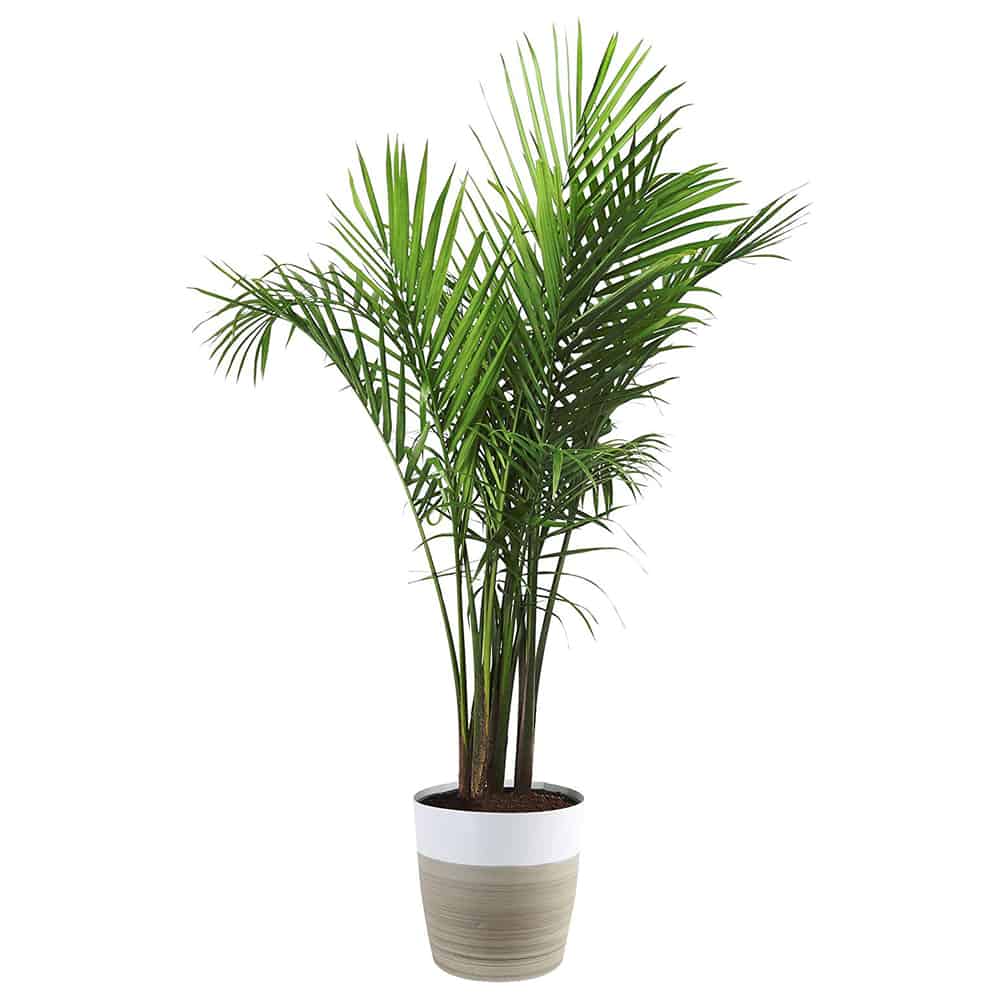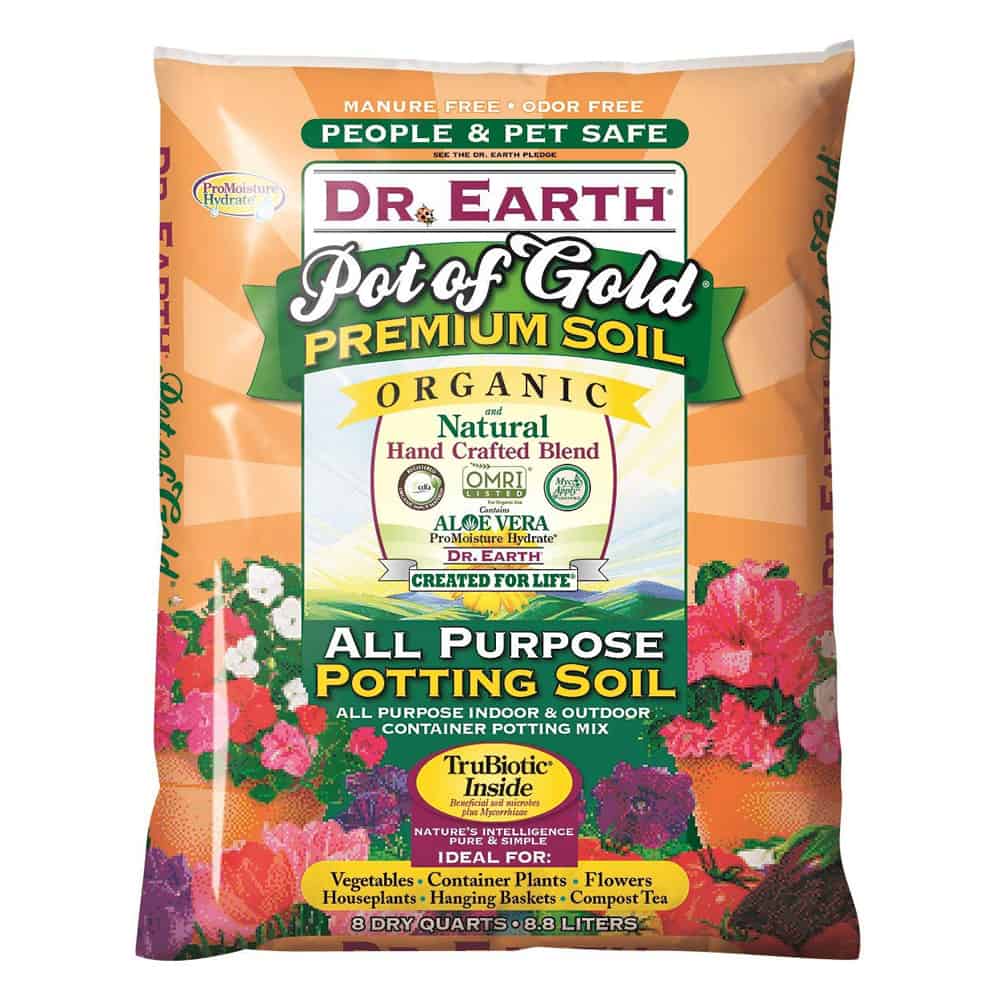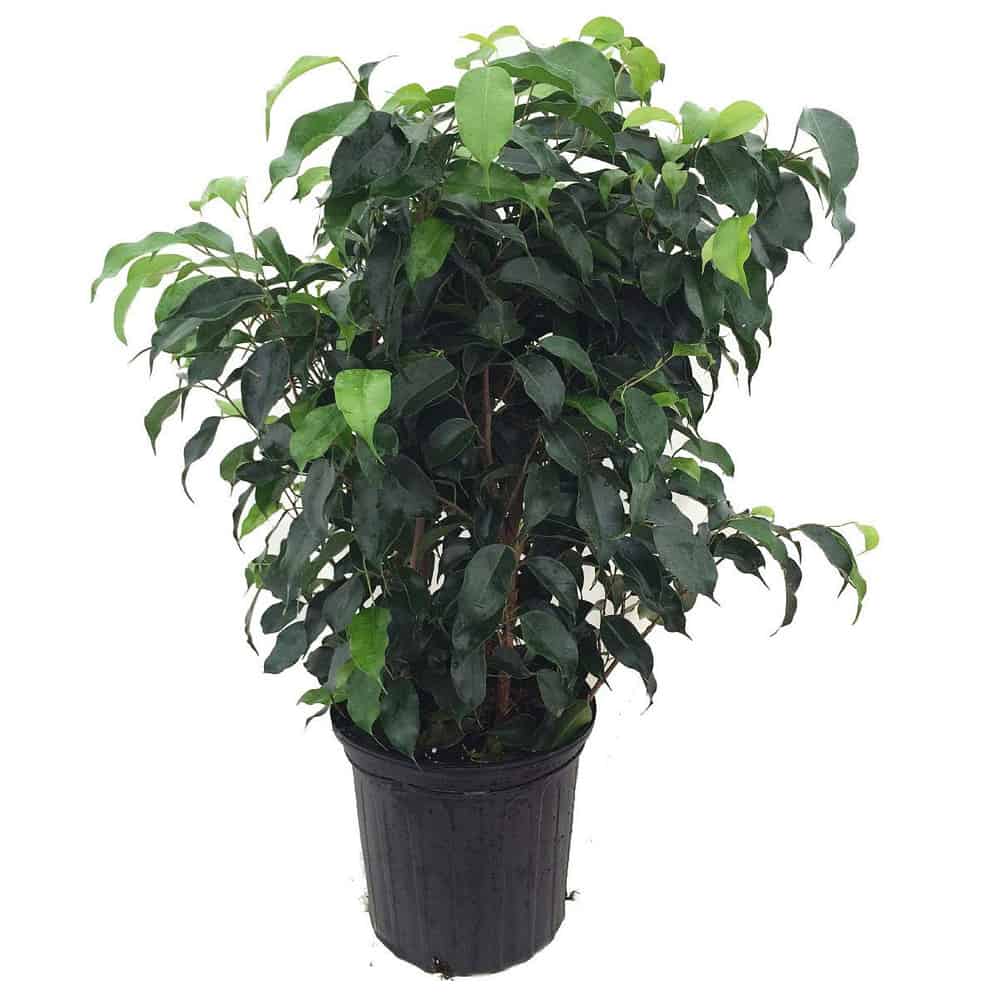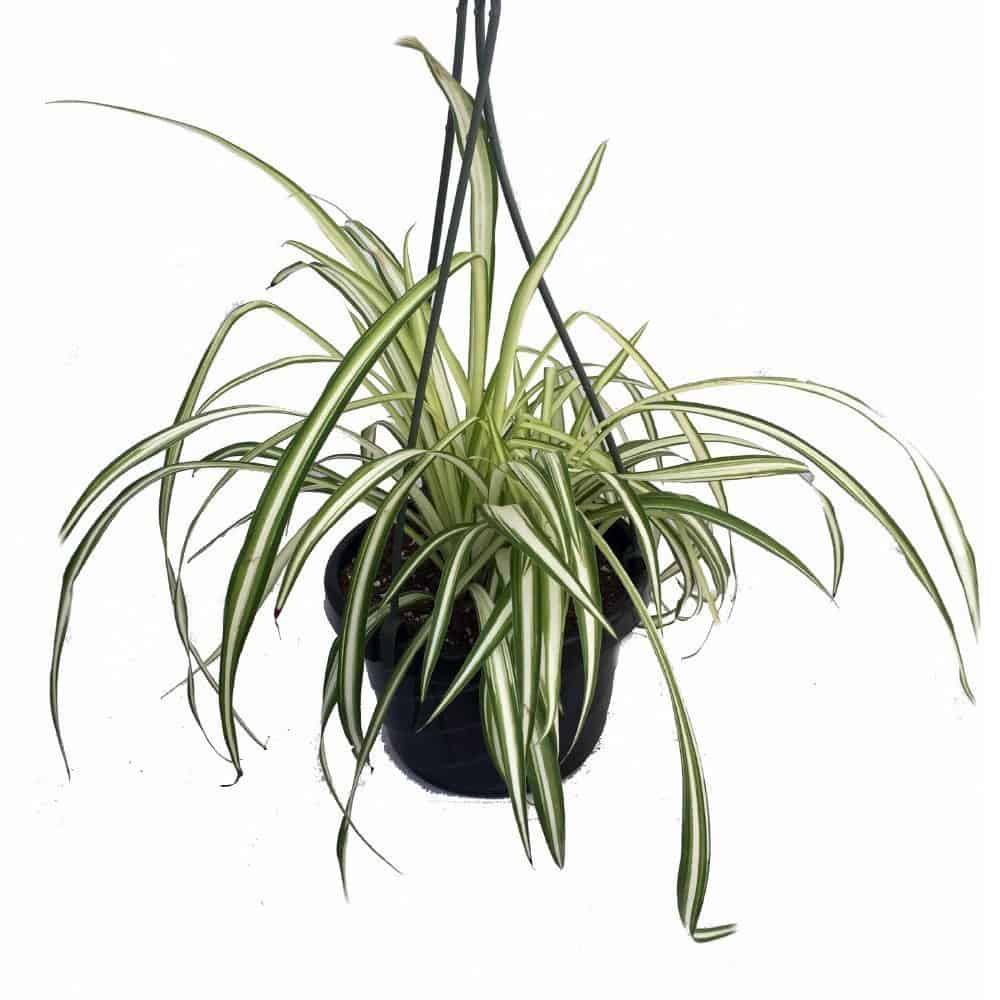The Best Air Purifying Plants For Your Home
Add more greenery to your indoor space to boost your mood and purify the air. From the easy-to-care-for rubber plant to the non-toxic Boston fern, we’ve got details to get you started growing 10 air purifying indoor houseplants.
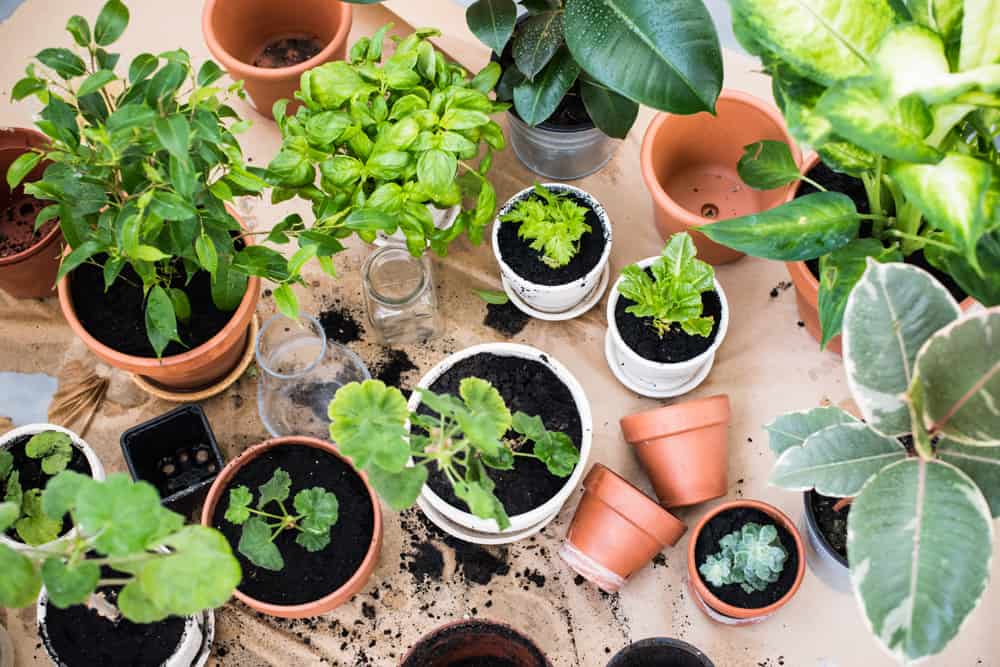
Disclosure: This post contains affiliate links, which means if you make a purchase through these links, we may receive a small commission at no extra cost to you.
There’s a reason I love the warmer months so much, and it has everything to do with outdoor plants greening up, growing and bursting with life. But, that means the winter months leave me feeling a little blah with all the gray, dormant vegetation outside. So, I started thinking that a few new houseplants would help get me through the rest of the winter.
A pop of green leaves planted in some new indoor pots may be all that’s needed to brighten up our house.
Aside from mood-boosting qualities, houseplants are known for cleaning indoor air. If you think of all the furniture, paint, carpet, flooring, upholstery, and other products that may be off-gassing volatile organic compounds (VOCs) in your home, getting a few more houseplants sounds like a great idea.
Dating back to the late ‘80’s, a study funded by NASA found that certain houseplants purify the surrounding air of VOCs (1). Since the measurements were taken in a laboratory setting in small, confined chambers, critics have questioned how well this study translates to the square footage of a room or office (2).
Experts estimate that with the most effective VOC-filtering plant, you would need one plant per square foot, and with a less effective plant, a room would require around 10 plants per square foot. That’s a lot of plants!
I’m not going to plant a jungle in my house. But… even if there’s a tiny amount of air purifying exchange between houseplants and VOCs, it doesn’t hurt to have some houseplants around. As I mentioned earlier, greenery can have a positive impact on you mood and health (3). So with that in mind, I’m ready for some new houseplants. If you’re considering adding indoor plants to your home this winter, here are 10 houseplants to get you started:

Spider Plant (Chlorophytum comosum) You can propagate new spider plants from the baby plant offshoots. Leave the baby attached to the parent plant until you see roots, then snip the runner. Plant the baby spider plant in a small pot with potting soil.
- Toxins removed: Formaldehyde, benzene and xylene
- Light Requirements: Bright, indirect light to partial shade
- Water Requirements: Allow the soil to dry out between watering
- Difficulty: Easy
- Toxicity: Non-toxic to Dogs, cats and children

Parlor Palm (Chamaedorea elegans/Neanthe bella) Parlor palms are easy to grow and care for, which makes them perfect for those new to growing houseplants.
- Toxins removed: Formaldehyde and benzene
- Light Requirements: Indirect light and low light
- Water Requirements: Water once the soil begins to dry out. Do not overwater and ensure the plant has proper drainage to prevent root rot
- Difficulty: Easy
- Toxicity: Non-toxic to Dogs, cats and children

Boston Fern (Nephrolepis exaltata) This is a humidity-loving plant.
- Toxins removed: Formaldehyde and xylene
- Light Requirements: Indirect light
- Water Requirements: Keep the soil moist at all times
- Difficulty: Moderate
- Toxicity: Non-toxic to Dogs, cats and children
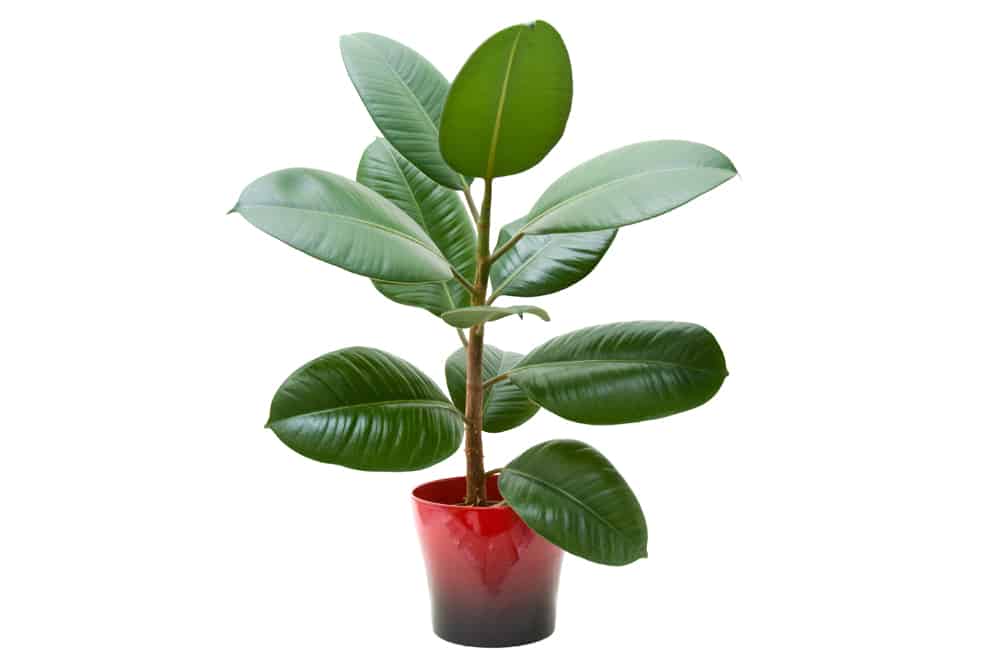
Rubber Tree (Ficus elastica) This thick-leaved plant grows to a height of 8 feet with a spread of up to five feet, so it may need to be staked.
- Toxins removed: Formaldehyde, xylene, benzene and trichloroethylene
- Light Requirements: Indirect light or low light
- Water Requirements: Water thoroughly and let the soil dry out between watering
- Difficulty: Easy
- Toxicity: Toxic to dogs, cats and children

English Ivy (Hedera helix)- Incredibly easy to grow and adaptable—it works well as a hanging plant.
- Toxins removed: Trichloroethylene, formaldehyde, benzene, and xylene
- Light Requirements: Bright, indirect light
- Water Requirements: Keep the soil moist, but not wet, mist leaves frequently
- Difficulty: Moderate
- Toxicity: Toxic to dogs, cats and children

Peace Lily (Spathiphyllum ‘Mauna Loa’)- A low maintenance, hardy plant. The leaves droop when it’s thirsty. It has a characteristic white ‘flower,’ and is one of the few tropical plants that blooms indoors. Peace Lily has a high transpiration rate to both purify and humidify indoor air, and it tolerates neglect.
- Toxins removed: Trichloroethylene, formaldehyde, benzene, xylene, acetone and ammonia
- Light Requirements: Indirect light to low light
- Water Requirements: Keep the soil moist, not soggy. Drought tolerant
- Difficulty: Easy
- Toxicity: Toxic to dogs, cats and children

Weeping Fig Tree (Ficus benjamina) The leaves of the Weeping Fig “weep” if the growing conditions aren’t met. Placing a humidifier near this plant will encourage plant growth, as it prefers a humid environment.
- Toxins removed: Formaldehyde and xylene
- Light Requirements: Bright, indirect light
- Water Requirements: Allow the soil to dry out between watering
- Difficulty: Medium
- Toxicity: Toxic to dogs and cats. Humans can have allergic skin reaction to the sap
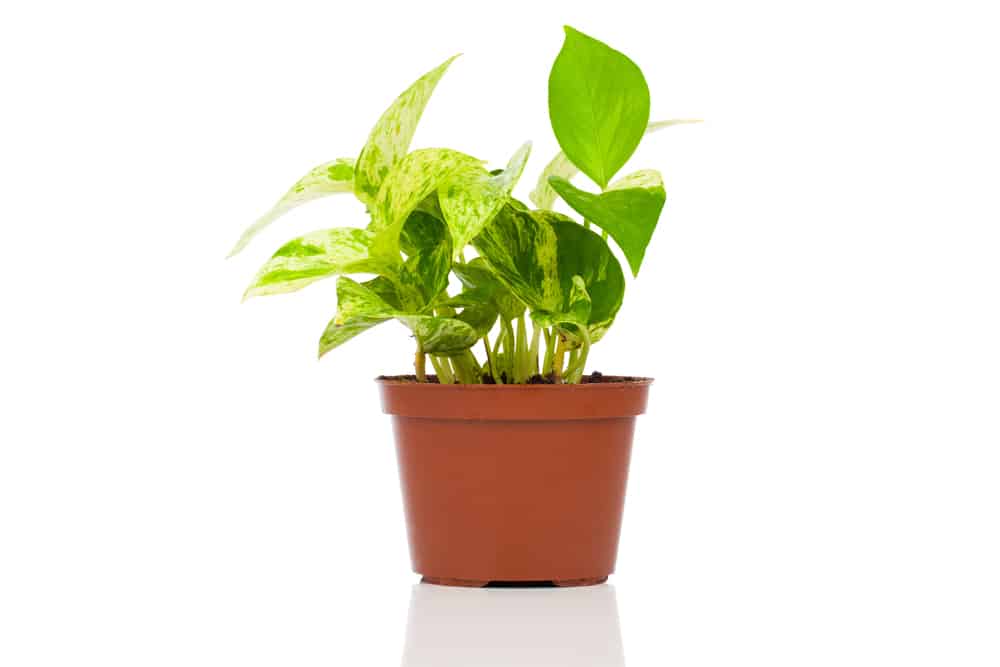
Golden Pothos (Epipremnum aureum) A good, easy plant to grow if you’ve never had houseplants.
- Toxins removed: Formaldehyde, benzene, trichloroethylene and xylene
- Light Requirements: Bright, indirect light to low light
- Water Requirements: Allow the soil to dry out between watering
- Difficulty: Very Easy
- Toxicity: Toxic to dogs, cats and children

Dracaena “Janet Craig” (Dracaena deremensis) Dracaena is also one of the easiest houseplants to grow. The mature plant reaches 10 feet in height with a spread of three feet, and can live for decades if properly maintained.
- Toxins removed: Trichloroethylene
- Light Requirements: Indirect light or semi-shade
- Water Requirements: Keep the soil moist but not soggy
- Difficulty: Easy
- Toxicity: Toxic to dogs, cats and children

Heart Leaf Philodendron (Philodendron oxycardium) A climbing vine that takes little maintenance to survive.
- Toxins removed: Formaldehyde
- Light Requirements: Indirect light
- Water Requirements: Let the soil dry out between watering
- Difficulty: Easy
- Toxicity: Toxic to dogs, cats and children
Shop Live Indoor Houseplants
Houseplant Tips
- Selecting Houseplants– Look for healthy plants that don’t have yellow or wilted leaves, brown edges, spots, blotches, or spindly growth.
- Light requirements– Check the light requirements on the label tag. Light levels are classified into four categories: low, medium, high and very high. High light plants require southern or western sunlight exposure near windows or glass doors.
- Watering– Over and under watering are the two biggest issues with houseplants. Check guidelines for the plant you purchased for watering requirements. The plant should come with a label in the soil outlining the needs of the plant. If this is missing, look up the requirements online. You can stick your finger into the soil to determine soil dryness. If the soil is moist, water lightly or don’t water at all. If the soil is dry, make sure to thoroughly water it.
- Pots & Containers– I like containers with good drainage, meaning they have at least one hole for water drainage on the bottom of the pot. Almost any type of container can be used for your plant as long as it’s no more than 25% bigger than the previous pot. Just make sure your plant fits in well and it’s not too top heavy so that it falls over. If you have a decorative planter with no holes in the bottom, you have two options. You can drill holes in the bottom with a wet drilling technique. Or you can keep your plant in the original pot that it came in, placing that inside the decorative container.
- Soil– We use an all-purpose potting soil. Don’t use soil from your garden!
Keeping Pets Away From Houseplants
- If you have a new kitten or puppy, you may want to keep your plants at an elevated level away from where they can be chewed.
- Apparently cats don’t like the smell of lemon rinds or citrus oils, so surround houseplant soil with lemon rinds to deter cats (I have not tried this).
- Apparently dogs dislike cayenne pepper, so sprinkling around houseplant may deter your dog (I have not tried this either).
- Find the ASPCA list of plants toxic to cats here.
- Find the ASPCA list of plants toxic to dogs here.
Keeping Small Children Away From Plants
My second daughter would eat anything when she was a toddler. That included dog food, crayons, you name it. If you have houseplants and small children, make sure to put the plants at a level where they can’t reach them or pull them down. A mantel is a good spot for houseplants at this stage. Tall furniture should be bolted to the wall before putting houseplants on top.
How To Repot A Houseplant
- Spring is a great time to repot plants. With increased hours of daylight and higher temperatures, houseplants are ready to grow.
- Start by giving your plant a thorough watering a day (or a few hours) before you plan to re-pot. Watering makes it easier to get your plant out of its current pot and keeps it well hydrated before transplanting.
- Gently remove the plant from its current pot. You may need to give the sides of the container a light squeeze to loosen the soil. Place the pot on its side and pull the pot back as the plant slides out. If the plant won’t budge, use a butter knife and gently work around the sides of the pot, loosening the soil and roots.
- Once the plant is out of the pot, shake and brush away excess soil, taking care not to damage the roots. Cut away damaged roots with pruning shears. If you have a jumble of roots, trim up to ⅔ of the outer part of the root mass.
- If you plan to reuse the same pot, remove all of the soil from the pot and disinfect the pot. Wash the pot with hot, soapy water and rinse. Turn the water off, add about ½ cup of white vinegar, scrub the pot, then rinse with hot water. Spray the pot with 3% hydrogen peroxide and let it air dry.
- If you go with a new pot, make sure it’s no more than 2” in diameter larger than the original plant container. Too much space actually slows growth and can lead to root rot (I think this is what happened with one of our houseplants).
- If you have a decorative planter with no holes in the bottom, you have two options. You can drill holes in the bottom with a wet drilling technique. Or you can keep your plant in the original pot that it came in, placing that inside the decorative container.
- When you’re ready to pot your plant, add a layer of fresh potting soil to the bottom of the pot. You want the base of your plant to be about ½ inch below the rim of the pot.
- Place your plant in the new pot and add potting soil around the root ball. Firm the soil gently, making sure not to crush the roots. Water the plant so the new soil is moist but not sopping wet.
After Re-Potting Your Plant
- Your plant just went through the shock of replanting, and may appear wilted. Refrain from watering for a week to ensure that any roots damaged during replanting have healed. During the recovery period, place plants in a cooler, shadier spot.
- Most potting soil contains fertilizer. To prevent over-fertilizing, wait to fertilize your plant for about 6 weeks after replanting. Truth be told, I have two plants- a jade plant and a Christmas cactus, that I have not fertilized for 10 years and they are still alive. So, I’m not sure fertilizing is even necessary.
More Natural Living Inspiration

References
- Wolverton, B.c., Johnson, A. and K. Bounds. Interior landscape plants for indoor air pollution abatement. NASA. Sept. 15, 1989. https://ntrs.nasa.gov/archive/nasa/casi.ntrs.nasa.gov/19930073077.pdf
- German J, et al. (2018). Critical review: How well do plants perform as indoor air cleaners.
https://www.buildingecology.com/download/critical-review-how-well-do-house-plants-perform-as-indoor-air-cleaners/ - Engemann, K. et al. Residential green space in childhood is associated with lower risk of psychiatric disorders from adolescence into adulthood. PNAS March 12, 2019 116 (11) 5188-5193.
https://www.pnas.org/content/116/11/5188
images via depositphotos
watercolor images via AquarelDesigns on etsy








